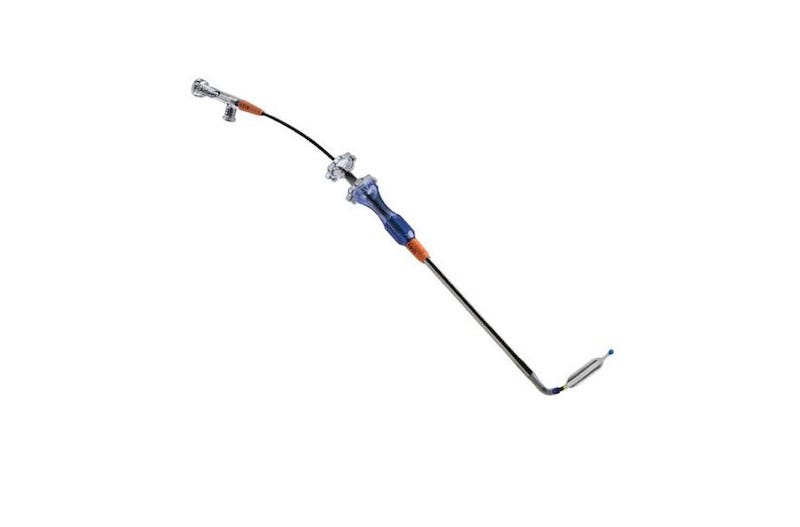Acclarent, part of Johnson & Johnson MedTech,(i) and a provider in developing minimally-invasive Ear, Nose & Throat (ENT) technologies, received clearance from the U.S. Food and Drug Administration (FDA) for the Acclarent AERA Eustachian Tube Balloon Dilation System in the treatment of children, ages 8-17, with persistent obstructive Eustachian tube dysfunction (OETD).
This aims to expand access to treatment options for pediatric patients with OETD, previously only indicated for adults. Acclarent is one of the first companies to receive FDA clearance for Eustachian tube balloon dilation in children, according to Acclarent.
Approximately 1.48 million adolescents in the US suffer from OETD,(1) a common ear condition where the Eustachian tube has difficulty opening. This causes a buildup of fluid in the ear, leading to hearing loss, discomfort, pain and/or pressure. If left untreated, OETD in children may cause delays in learning and development, or more serious ear conditions requiring invasive surgery.(2)
Treating Pediatric OETD
Treatment options for children with persistent OETD were traditionally limited to tympanostomy (ear) tubes, adenoidectomy (removal of the adenoids) and oral therapies to fight infection and inflammation. However, these options do not always treat the source of the problem. In addition, recurrent ear tube procedures may be associated with long-term complications, such as ear drum perforation, conductive hearing loss or cholesteatoma.(ii,3,4,5) With Acclarent’s expanded indication of the AERA Eustachian Tube Balloon Dilation System, parents have access to an effective alternative to treat their children with persistent ear symptoms.
“In cases where symptoms continue and additional procedures are required, Eustachian tube balloon dilation could treat the underlying cause of persistent OETD. With this FDA clearance, physicians will be able to offer their pediatric patients an effective alternative that provides enduring relief, reducing stress and concerns for parents,” says Dennis Poe, MD, PhD, Professor of Otolaryngology–Head and Neck Surgery, Harvard Medical School, and Associate in the Department of Otolaryngology and Communication Enhancement at Boston Children’s Hospital.(iii)
Acclarent AERA was specifically designed for the Eustachian tube anatomy with flexibility to reach the source of the problem in a minimally invasive way without incision in the ear drum. A robust and growing body of Eustachian tube balloon dilation evidence in adults has shown significant short-term improvement, long-term durability, favorable safety profile and superior performance compared to medical management.(6,7) The Eustachian tube anatomy of children aged 8 and older closely matches that of adult patients.8 Real-world evidence was analyzed to evaluate the safety and effectiveness of Acclarent AERA in patients aged 8-17 with OETD, which supports that Eustachian tube balloon dilation is comparable, if not superior, to tympanostomy tube placement alone.9 With the FDA clearance of Acclarent AERA, the established benefits seen in studies for adults will now be accessible to children aged 8 and above, according to the company. (8,10,11,12)
“The expanded indication of the Acclarent AERA Eustachian Tube Balloon Dilation System is a transformational moment for families and children suffering with chronic ear issues,” says Jeff Hopkins, president of Acclarent. “Today’s milestone is an example of how Acclarent collaborates with surgeons to pioneer innovation, driving better outcomes for patients with ENT conditions.”
Further reading: Overcoming the ENT Innovation Lag
References:
i. Johnson & Johnson MedTech comprises the surgery, orthopaedics, vision and interventional solutions businesses within Johnson & Johnson’s MedTech segment.
ii. An ear cholesteatoma is a cyst-like growth behind the eardrum.
iii. Dr. Dennis Poe is a paid consultant to Acclarent, Inc.
- Kim AS, Betz JF, Goman AM, et al. Prevalence and Population Estimates of Obstructive Eustachian Tube Dysfunction in US Adolescents. JAMA Otolaryngology–Head and Neck Surgery. 2020;146(8):763-765. doi:10.1001/jamaoto.2020.0962
- Aboueisha MA, Attia AS, McCoul ED, et al. Efficacy and safety of balloon dilation of eustachian tube in children: Systematic review and meta-analysis. International Journal of Pediatric Otorhinolaryngology. 2022; 154. doi:10.1016/j.ijporl.2022.111048
- Adil E, Poe D. What is the full range of medical and surgical treatments available for patients with Eustachian tube dysfunction? Current Opinion in Otolaryngology & Head and Neck Surgery. 2014;22(1): 8-15. doi:10.1097/MOO.0000000000000020
- Kay DJ, Nelson M, Rosenfeld RM. Meta-analysis of tympanostomy tube sequelae. Otolaryngology–Head and Neck Surgery. 2001;124(4):374-380. doi:10.1067/mhn.2001.113941
- Ho S, Kay DJ (2016) Tympanostomy Tube Selection: A Review of the Evidence. International Journal of Head Neck Surgery. 2016;7(1):17-22. doi:10.5005/jp-journals-10001-1259
- Huisman JM, Froukje JV, Stegeman I, et al. Treatment of Eustachian tube dysfunction with balloon dilation: A systematic review. Laryngoscope. 2018;128(1): 237-247. doi: 10.1002/lary.26800
- Froehlich MH, Phong TL, Nguyen SA, et al. Eustachian Tube Balloon Dilation: A Systematic Review and Meta-analysis of Treatment Outcomes. Otolaryngol Head Neck Surg. 2020;163(5):870-882. doi: 10.1177/0194599820924322
- Magro I, Pastel D, Hilton J, et al. Developmental Anatomy of the Eustachian Tube: Implications for Balloon Dilation. Otolaryngology–Head and Neck Surgery. 2021;165(6):862–867. doi:10.1177/0194599821994817
- Acclarent AERA Eustachian Tube Balloon Dilation System Traditional 510(k) K230742
- Takasaki, K. et al. Measurement of angle and length of the eustachian tube on computed tomography using the multiplanar reconstruction technique. Laryngoscope. 2007;117(7):1251–1254. doi:10.1097/MLG.0b013e318058a09f
- Yu Y, Geffen B, McCrary H, et al. Measurements of The Pediatric Cartilaginous Eustachian Tube: Implications for Balloon Dilation. Laryngoscope. 2023;133(2):396–402. doi: 10.1002/lary.30113
- Janzen-Senn I, Schuon RA, Tavassol F, et al. Dimensions and position of the Eustachian tube in Humans. PLoS One. 2020;15(5). doi:10.1371/journal.pone.0232655
Featured image: Acclarent AERA Eustachian Tube Balloon Dilation System. Photo: Acclarent





